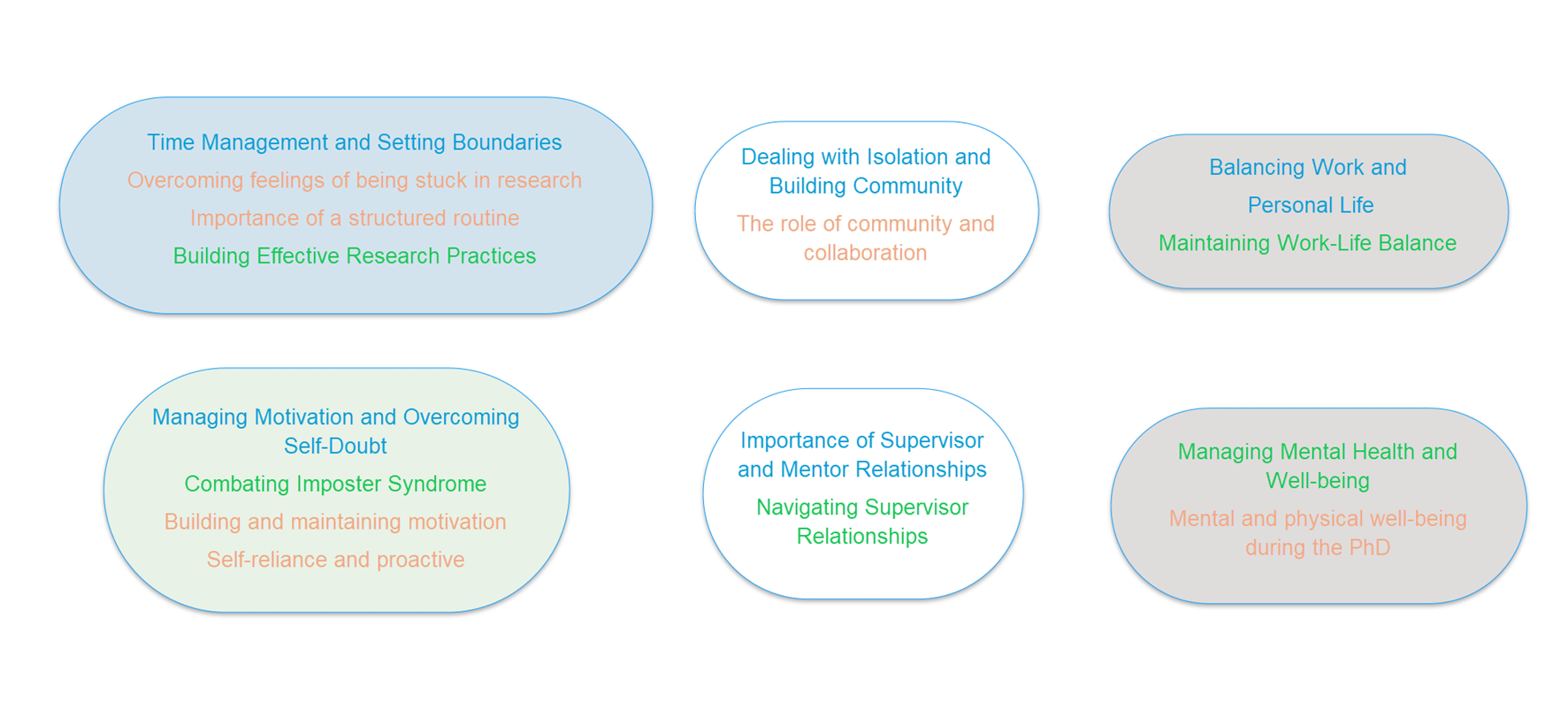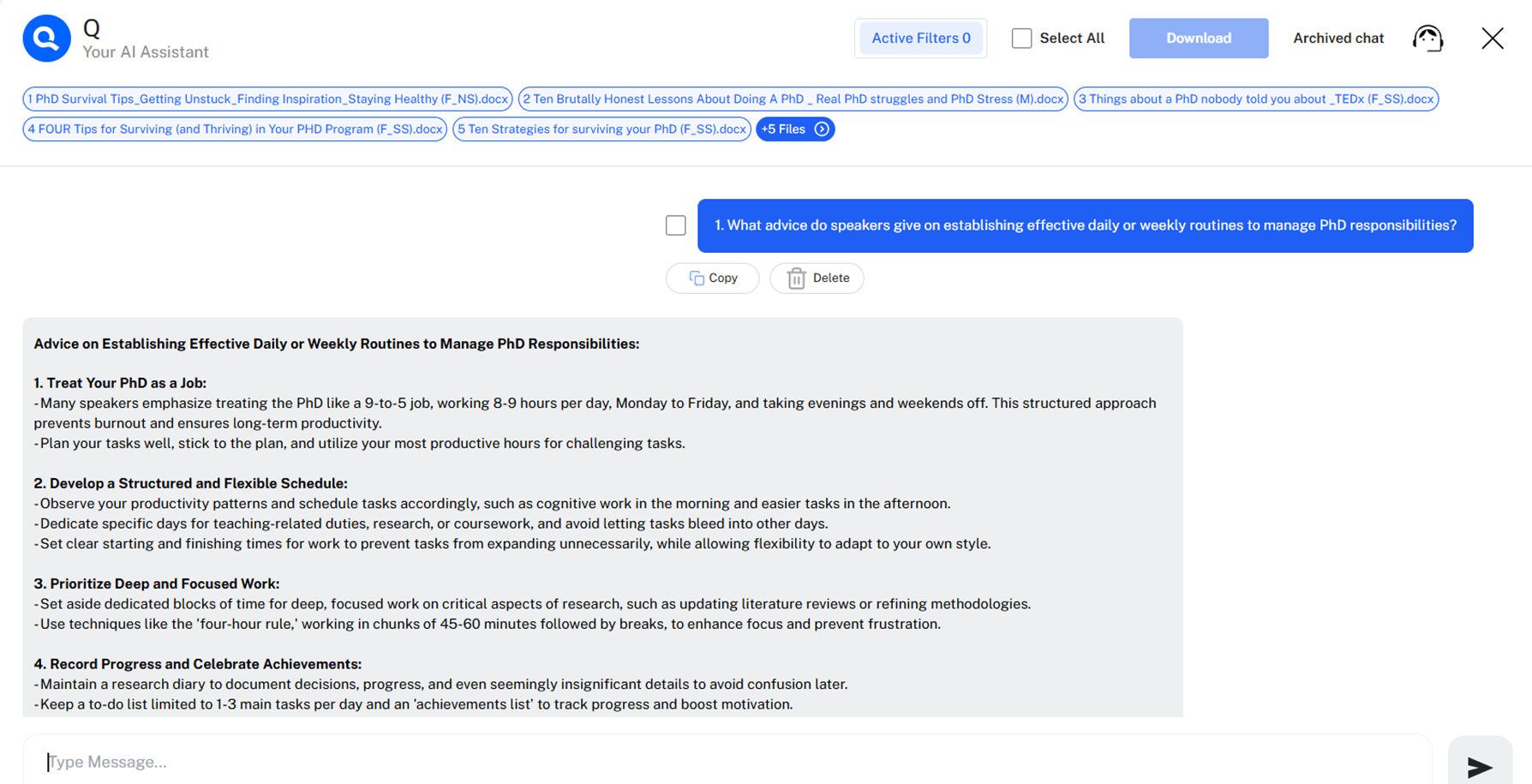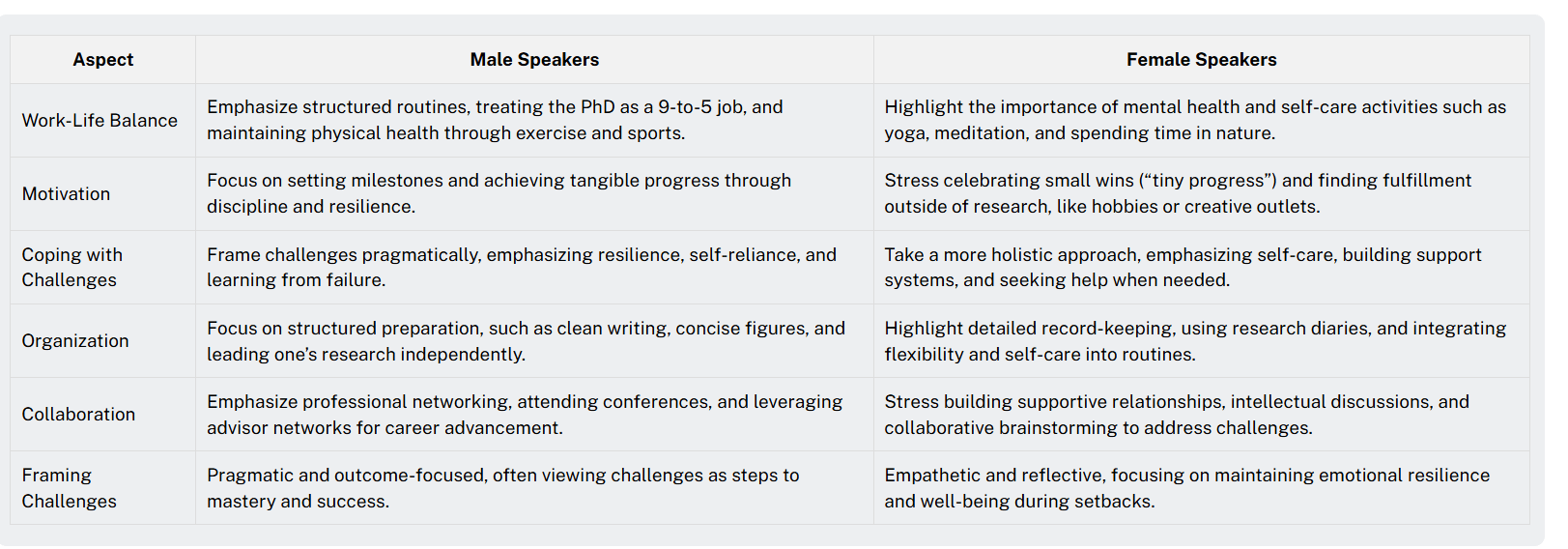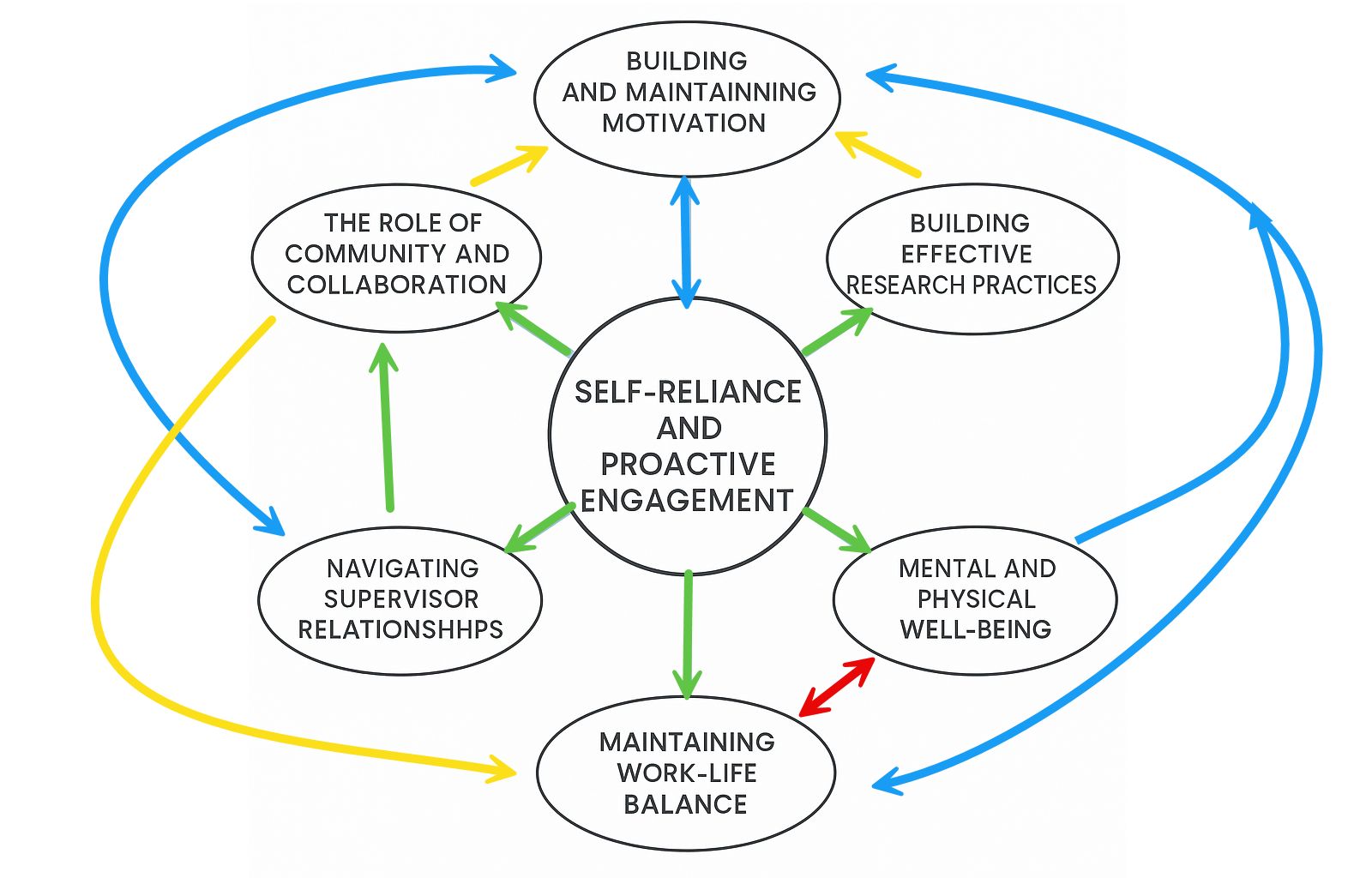- QInsights Pulse
- Posts
- Navigating the PhD Journey - An Example Analysis of YouTube Videos
Navigating the PhD Journey - An Example Analysis of YouTube Videos

Dear reader
In our recent webinar, I shared a hands-on example to demonstrate how QInsights helps turn raw qualitative data into meaningful insights.
I analysed 10 transcribed YouTube videos in which PhD students—or recent graduates—reflect on their journey and offer survival tips. To give you an idea of how long it took me from idea to first results, here’s the timeline:
The evening before the webinar, I was still thinking about what project to present. I landed on the PhD journey theme, collected the data, and prepared it for analysis. By Tuesday midday (with a few hours of sleep in between 😉), I already had a good sense of the data and some visualised patterns to show.
Here’s what I did:
Step 1: Ran three Theme Analyses to identify recurring topics across the transcripts.
The image below shows the themes generated across three analysis runs. Each colour represents a different run. You’ll notice that many themes overlap—though their titles may be phrased slightly differently. Some themes appear in all three runs, while others show up only once or twice. This visual gives you a sense of how consistent patterns emerge and how QInsights allows for nuanced exploration from multiple angles.

Exploratory themes after three runs
Step 2: Identified the themes I wanted to explore further. These were:
Building effectice research practice
Self-reliacne and proactive engagement
The role of communtiy and collaboration
Navigating supervisor relationships
Maintaining work-life balance
Mental and physcial well-being during the PhD
Step 3: Used Conversational Analysis to dive deeper—asking follow-up questions and comparing speakers’ views.
Following the CA to the Power of AI approach, I first developed a set of guiding questions for each of the themes I wanted to explore in more depth. For example, the questions I used to further investigate the theme "Building Effective Research Practices" were:
What advice do speakers give on establishing effective daily or weekly routines to manage PhD responsibilities?
How do speakers describe their approach to managing time and avoiding overcommitment during the PhD?
What tools or habits do speakers recommend for staying organized and keeping track of research progress?
How do speakers frame the importance of setting boundaries between work and personal life during the PhD?
In QInsights it looked like this:

Conversational Analysis in QInsights
With each topic I also explored potential differences by gender or subject of study and asked Q to prepare a comparative table:

Exploring gender differences
Step 3: Asking Interpretive Questions
With each topic, I gained deeper insights into the data. This allowed me to move beyond surface-level patterns and start asking more interpretive questions to explore conceptual links across themes.
One of the hypotheses that emerged was the idea that “building and maintaining motivation” might be the central theme around which all others revolve. To explore this, I asked QInsights the following:
In different chats, I’ve discussed topics like “1. Building effective research practices,” “3. Mental and physical well-being,” “4. Maintaining work-life balance,” “5. Navigating supervisor relationships,” and “6. The role of community and collaboration.”
All of these seem to connect back to the idea of motivation. Could it be that “building and maintaining motivation” is the core category around which the others cluster?
If motivation is strong, mental health improves—and the other aspects either support motivation (e.g., effective research routines, social support, a good supervisor relationship, physical well-being) or result from it, such as a sustainable work-life balance.nd maintaining physical health. Work-life balance is then a positive outcome.
Next, I asked QInsights to help me brainstorm other possible conceptual connections. I started by exploring the role of self-reliance and proactive engagement—a theme that seemed to underpin many others.
I posed the following question:
Let's brainstorm about other possible connections. I want to first explore the role of self-relicance and practive engagement. And then we can think whether this could be a core around which everything else evolves. How do speakers describe taking ownership of their research and academic progress during the PhD?How do speakers describe taking ownership of their research and academic progress during the PhD?
The goal was to see whether self-reliance might actually be an even deeper foundation—perhaps the true core from which motivation, well-being, effective practices, and other elements emerge.
After some further exploration, I asked QInsights to help me visualize the relationships I was beginning to see in the data. This was Q’s suggestion:
Imagine a wheel with "self-reliance and proactive engagement" at the center. The other aspects—motivation, research practices, well-being, work-life balance, supervisor relationships, and community—are the spokes radiating outward. Each spoke is interconnected, forming a feedback loop:
Self-reliance and proactive engagement fuel motivation, which in turn sustains proactive efforts.
Effective research practices are built on self-reliance and further enhance motivation and productivity.
Mental and physical well-being, as well as work-life balance, are maintained through proactive boundary-setting and self-awareness.
Supervisor relationships and community engagement are strengthened by proactive communication and collaboration.
I took Q's suggestion and created a visual using my go-to image app. While QInsights doesn’t (yet) generate visuals, this feature is on the roadmap. For now, what you can do is ask Q for ideas on how to visualize concepts, relationships, or structures that emerge in your analytic chats—it’s a helpful way to move from insight to presentation.

Visualization of analysis results
This isn’t a finished analysis yet—what’s still missing is the write-up. Turning these findings into a full report would take a few more days, depending on the desired depth and level of academic rigour. But thanks to QInsights, I already have a solid foundation: key themes, comparisons, conceptual links, a first synthesis, and a visualization—all ready to be developed further.
I don’t want to make it all about efficiency—but it really is that simple. When used thoughtfully, an AI assistant within a tool built specifically for qualitative analysis doesn’t just save time—it can also deepen your thinking and improve the quality of your results. It’s about working smarter, not cutting corners.
🎥 Curious to see the process in action?
You can watch the full walkthrough in the Webinar Recording.
👉 Ready to give it a try yourself? Login or Register
Warm regards,
Susanne
PS: If you’ve been testing QInsights and are ready to go further, contact us for pricing [email protected]. We’d love to have you on board.
Dr. Susanne Friese
Rebel Methodologist
Founder of Qeludra and Co-Founder of QInsights

Converse of Insights